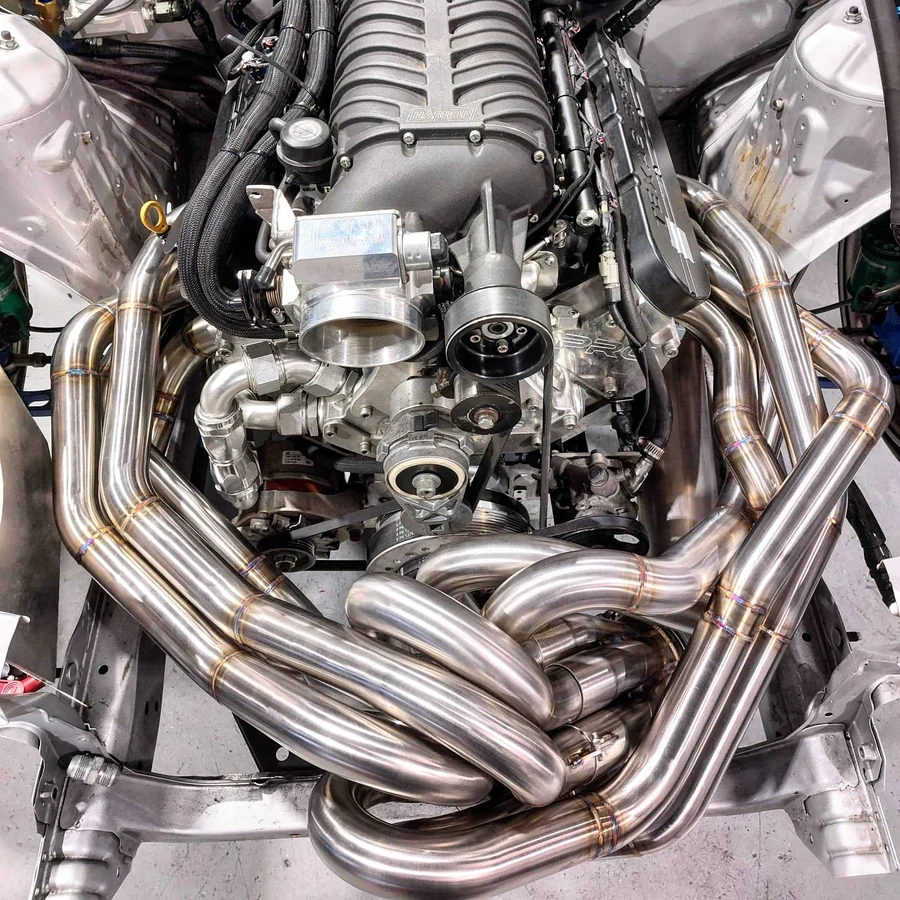Not everything about your car’s performance has to do with the engine. There are certain components that work together with it but they are not part of it, which can improve also improve performance. One of the perfect examples of this is the exhaust manifold.
A manifold is able to take the gasses produced in each combustion chamber and send them either to the turbo or to the exhaust. As part of the exhaust system, the manifold can help the engine “breathe better” and if you go for an aftermarket exhaust manifold that can make a big difference in performance. A manifold is also one of the most stressed components in your vehicle.
Types of Manifolds

Tubular
When it comes to the way they’re manufactured there are really two types of manifolds and tubular ones are one of them. A tubular exhaust manifold comes with a pipe that goes to each cylinder which is the design most petrol heads prefer. Why? It’s because a tubular sports exhaust manifold is able to let engine gasses pass through with ease and no interference.
Cast
With cast car manifolds you can’t expect the same results as you would with tubular ones. That’s mainly because a cast manifold is a simple piece of metal that is cut into shape. This makes for individual piping but their short-sleeved design is what makes engine fumes jumble up on their way out and cause poor performance. Cast manifolds are often short tube manifolds since the manufacturing process itself doesn’t allow for long tubing, hence why they’re so restrictive.
Manifold Layout
4-2-1
The layout of the piping and how they join is also available in two different configurations and the 4-2-1 configuration is best for delivering power at the middle of your RPM range. A 4-2-1 layout means you have two sets of 2 pipes converging into one and then each one of those converging into one single pipe that leads to the exhaust.
4-1
With a manifold that has a layout of 4-1, you get each pipe to merge into one single piece straight away. What this means for you is that you get better power higher in the rev range and less exhaust backpressure which is far better for performance than what you get with a 4-2-1 layout.
Manifold Materials

Cast Iron
The most affordable material you can have an aftermarket exhaust manifold made of is cast iron. Cast iron manifolds are durable though and can have a considerably long lifespan. However, they are not as durable as some other materials when it comes to a high number of heat cycles despite having good heat-absorbing capabilities. That’s because cast iron manifolds are heavy and brittle, meaning they crack more easily when exposed to heat for a longer period.
Stainless Steel
With stainless steel manifolds, you get a corrosion-resistant and aesthetically pleasing upgrade over cast iron manifolds. That’s because stainless steel is able to withstand higher temperatures for much longer than cast iron can and the former is also lighter and stronger. You can also get a stainless steel sports exhaust manifold with a ceramic coating on it which can make it even more durable and usable with engines that run at much higher speeds, than usual, most of the time.
Titanium
The ultimate manifold material is titanium as it’s stronger, lighter and more temperature-resistant than both stainless steel and cast iron. A titanium manifold is however the most expensive of the three but if you’re planning on using your car exclusively on the track then you can’t go wrong with it. Titanium is also 100% recyclable and corrosion-resistant.
Short vs Long Tube Manifolds
When it comes to the length of car manifolds they can be short or long-tube. Short tube manifolds are easy to install and can be fitted on almost every engine which makes them a great space-saving solution.
But if you’re engine bay is not limited and you want to get better acceleration times and top speed then you should go for a long tube aftermarket exhaust manifold. This type of manifold may be more expensive and it will take up more space than a short tube manifold but it will improve the scavenging effect of your car and provide your engine with power in a much wider RPM range.
Conclusion
The best performance gains don’t always come by tuning your engine or adding a big turbo. While they are the most noticeable, they are not the most cost-effective or the simplest upgrade. Replacing one component may make all the difference and give your car the power it needs and it can come int the form of a manifold. As long as you go for the manifold that fits both your budget and your car you can enjoy the way it’ll behave both on and off the road.
